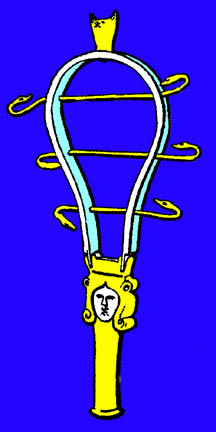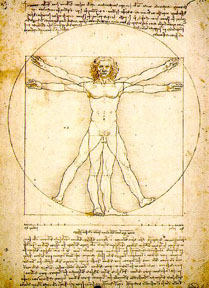e·piph·a·ny n., pl. -nies. a sudden, intuitive perception of or insight into reality or the essential meaning of something, often initiated by some simple, commonplace occurance.
I’m sure that we all have well-remembered epiphanies that have occurred in our lives, many of them very far back in childhood. A couple of weeks ago, I wrote here about such an event when I was able to see the planet Saturn for the first time through a very magnificent telescope. And there have been some other memorable incidents of a similar nature, and I will be bold enough to outline another one for you here and now.
Many persons who have followed my writings could have ample reason to picture me as a total curmudgeon. That’s not quite the case, a fact that astonishes many who meet me for the first time. Just like regular folks, specific events have brought me to a new or fuller understanding of myself or the world around me.
I will never forget attending Massey Hall in Toronto — my birth city — and hearing my first live performance of a symphony orchestra, the Toronto Symphony Orchestra, under conductor Sir Ernest Macmillan. The featured work that night was Tchaikovsky’s Sixth Symphony. I sat entranced through every note, and at age nine, was thoroughly committed to the enjoyment of classical music from then on. Just a few years ago, I rowed out to the center of a lake in Finland somewhere above the 64th parallel, and heard SILENCE roaring all around, at midnight, with the sun a few degrees above the horizon, just beginning to ascend once more. It was magical. And a few years before that I stood in the Pacification Room of the Town Hall of the city of Ghent, Belgium, and looked down at the ancient marble floor into which was worn, several inches deep, a trough abraded there by the bare feet of many thousands of elderly or infirm penitents who had been sentenced to traverse an oval course for many long hours as punishment for minor crimes. That, too, was a revealing experience.
But I would like to share with you here what was perhaps the most memorable of the experiences that I recall with great clarity. I was about eleven years of age, and at that point in my life quite captivated by Ancient Egypt, its peoples, its history, and its way of life. The Royal Ontario Museum — the ROM — with its magnificent Egyptian Gallery, was a very special place for me. I was familiar with almost every object on display, from a very brown and exceedingly dead mummy to a reconstructed portion of the wall that surrounded the temple of Hatshepsut — Egypt’s only female Pharoah.
I had been fortunate enough to be there at the ROM during the period that an artist named Sylvia Hahn was completing her magnificent murals in the Greek and Roman galleries, and she patiently ignored me as I sat cross-legged on the floor near the foot of the scaffold from which she labored. I marveled at the effect produced by her tracing a brightly-colored line all around the human figures that she portrayed on the walls — it made them stand out and appear almost three-dimensional.
 But Ms. Hahn,
though she aided in creating the atmosphere in which I reveled,
is not part of the story of my ROM epiphany. That involved
a rather wonderful object that occupied a pedestal with a glass
cover, all to itself. It was a sistrum (see illustration),
a hand-held Egyptian musical instrument made of copper or bronze,
a sort of rattle that was carried by priests and priestesses
devoted to Hathor or Isis, during temple ceremonies. It
consisted of a frame with several thick wires placed loosely
through holes and bent at the ends to prevent them from falling
out. Shaking that instrument was said to produce a melodious
tinkling noise. I had often passed that pedestal and pressed
my nose to the glass, wondering what the instrument would sound
like when shaken.
But Ms. Hahn,
though she aided in creating the atmosphere in which I reveled,
is not part of the story of my ROM epiphany. That involved
a rather wonderful object that occupied a pedestal with a glass
cover, all to itself. It was a sistrum (see illustration),
a hand-held Egyptian musical instrument made of copper or bronze,
a sort of rattle that was carried by priests and priestesses
devoted to Hathor or Isis, during temple ceremonies. It
consisted of a frame with several thick wires placed loosely
through holes and bent at the ends to prevent them from falling
out. Shaking that instrument was said to produce a melodious
tinkling noise. I had often passed that pedestal and pressed
my nose to the glass, wondering what the instrument would sound
like when shaken.
Some Egyptian god or other must have taken an interest in me on one particular day when a number of workmen were moving about the cases and pedestals in the Egyptian Room. I showed up in the doorway just as two of the workmen were carefully lifting the glass cover from the top of the pedestal. They carefully placed it aside on a padded table, where an assistant began busily cleaning the glass. Well, this was an opportunity that I would probably never be presented with again. Being rather bold for my age, I approached the now-uncovered sistrum on the pedestal and gave it a much closer look. The workmen appeared somewhat bemused at my interest and I took full advantage of that fact.
I bravely asked if I might handle the artifact if I wore a pair of the rubber gloves that I saw nearby. Much mumbling ensued, and my request was understandably denied. But that watching Egyptian god obviously put in a bit of influence for me at that moment, as a museum official showed up looking very authoritative, and asked what all the fuss was about. By now there were a few people standing in the doorways and becoming interested in this minor drama. I repeated my request, and the man — who turned out to be an assistant curator — told me that if I were very, very, careful, I could handle the wonderful sistrum. I’m sure that the ground shook at that moment, though I don’t remember.
I slipped on the gloves, which were far too big for me, and with an audience of some 30 people who had come from nowhere to witness this event, I reached up and gently lifted the instrument from its cradle. I was holding in my hands a genuine treasure of ancient Egypt, one that priests had revered and had used in their ceremonies thousands of years previously. I noticed that the transverse wires were moving slightly as I turned the rattle from side to side, and the obvious occurred to me and to everyone else at the same instant. A woman among the spectators whispered to me, “Shake it.”
Now, I don’t have any idea of the figures involved here, that object certainly had not been sounded in many, many, years, but I certainly felt that the right moment had arrived. I glanced over at the assistant curator, who barely raised his eyebrows at me and shrugged a bit. I needed no more encouragement. I raise the sistrum above my head, and in that absolutely silent room, I shook it.
A sound filled that room, a sound that had been heard in the temple of Isis many centuries before, amid the aroma of incense and the life-sounds of worshipers of a god about which we know almost nothing, to which we cannot relate, and who is now lost in the back pages of history. As the sistrum sang out, I’m sure that not a person in the room took a breath. I shook it again, this time with a little more confidence, and I stopped just as the assistant curator was about to raise his hand in caution. I stepped back to the pedestal and replaced the instrument — with a slight assist from one of the workmen. The now-polished glass cover was instantly raised by the workmen and carefully lowered over the artifact, a couple of screws were tightened quickly, and everything was as it had been.
To my utter amazement, a small wave of applause began to build in the crowd. There were smiles everywhere, and I know that Sir Ernest Macmillan never bowed to a more pleased gallery. The magic of that small moment had been appreciated, and I had shared this experience with what was perhaps my very first audience.
I never got over the delight that came my way on that occasion, and I might very well — with some justification — blame my entire show business career on that rush as a simple metal rattle from ancient Egypt made me into a star, if only for a moment.
Are there opportunities for us to bring moments like these to our younger generation? I’m sure there are, and at the JREF we look for them, we embrace them, and we try to encourage everyone to steer young folks into the path of such experiences. With some youth, an epiphany may occur when a particularly adept athlete manages to project a soccer ball into a goal net. With others, a nurse or a plumber might exhibit a moment of magnificent skill, dedication, or dexterity. We can never know when these experiences might occur and thereby change the course of a young life. But we must care enough that we value such matters and assign priority to them.
That’s a part of what we call education.
Let’s not forget that.
.................................
 We at the JREF can’t
begin to tell you how much attention our 19-cog-wheel problem
generated. The moment the new page was up last week, e-mail
began to pour in, and continued all through the week. That
was quite a surprise. What was even more of a surprise
is that we were given THREE distinctly different and equally
viable solutions to the problem! Just so that those of
you who only came up with ONE solution can work on the other
two, we’ll not give you the answers just yet. But
if you are one of the many persons who responded — and believe
me, we appreciate very much your participation and your willingness
to work on our puzzle — please forgive me for not being
able to answer you individually. There were just too many
responses.
We at the JREF can’t
begin to tell you how much attention our 19-cog-wheel problem
generated. The moment the new page was up last week, e-mail
began to pour in, and continued all through the week. That
was quite a surprise. What was even more of a surprise
is that we were given THREE distinctly different and equally
viable solutions to the problem! Just so that those of
you who only came up with ONE solution can work on the other
two, we’ll not give you the answers just yet. But
if you are one of the many persons who responded — and believe
me, we appreciate very much your participation and your willingness
to work on our puzzle — please forgive me for not being
able to answer you individually. There were just too many
responses.
In accordance with our promise last week, I’ll give you the “magic word” that will tip you off to the most common solution — but not to the others. That word is: Moebius — or Möbius, but NOT Mobius! The word was guessed by a number of persons, all of whom had the same correct response, not to our surprise. So, get that gray matter in gear and work on the other two solutions. Hey, this is fun!
Some of you have expressed uncertainty about e-mail addresses for the puzzle. Sorry. Send solutions and comments directly to: 76702.3507@CompuServe.com.
................................................................................
If you're one of those who already got all three (that we know of!) solutions to the 19-wheel-puzzle, you deserve a new one to work on while everyone else labors over the older one. Here's the new one:
 You have two huge outside-cogged wheels in the same
plane. One has 22 teeth, the other has 44. A man is spread out
Da Vinci-style (see modified illustration of the "Vitruvian
Man" drawing by Da Vinci) inside the smaller wheel -- and
he's holding on; he doesn't move relative to the smaller wheel.
Question: How many times will he go through a complete revolution
if the smaller wheel is rotated around the larger one so that
the smaller wheel comes back to exactly the same position from
which it started? The larger wheel is fixed in place.
You have two huge outside-cogged wheels in the same
plane. One has 22 teeth, the other has 44. A man is spread out
Da Vinci-style (see modified illustration of the "Vitruvian
Man" drawing by Da Vinci) inside the smaller wheel -- and
he's holding on; he doesn't move relative to the smaller wheel.
Question: How many times will he go through a complete revolution
if the smaller wheel is rotated around the larger one so that
the smaller wheel comes back to exactly the same position from
which it started? The larger wheel is fixed in place.
No gear slippage, the man isn't a contortionist. Don't ask me what he's doing in the wheel, it's a metaphysical thing understood only by the Illuminati.
But be warned: trick question!
